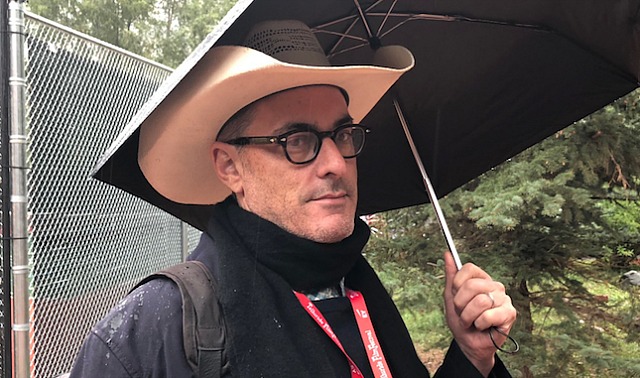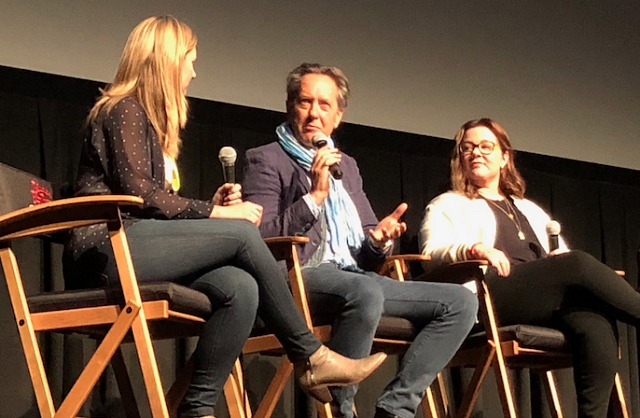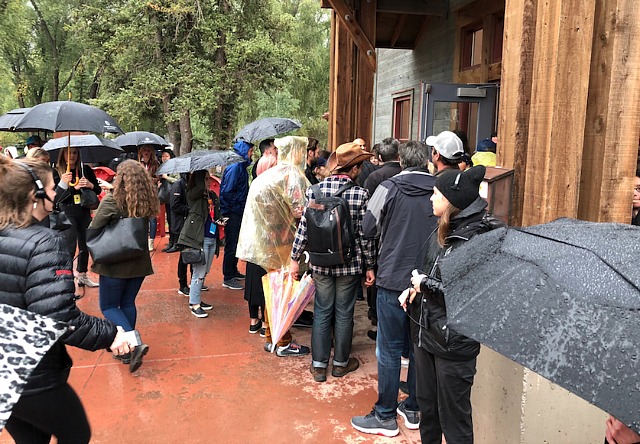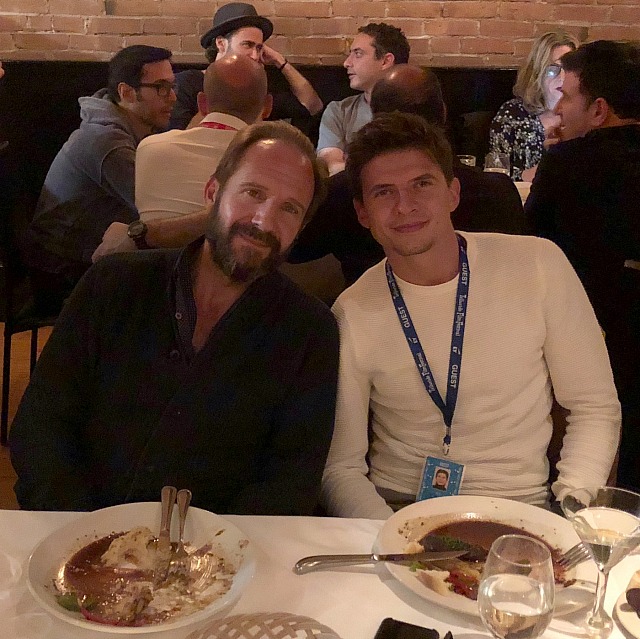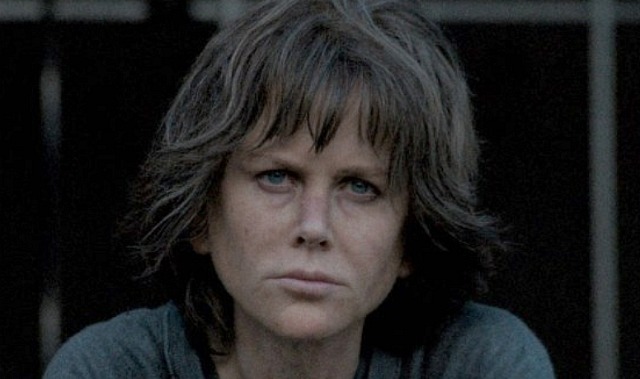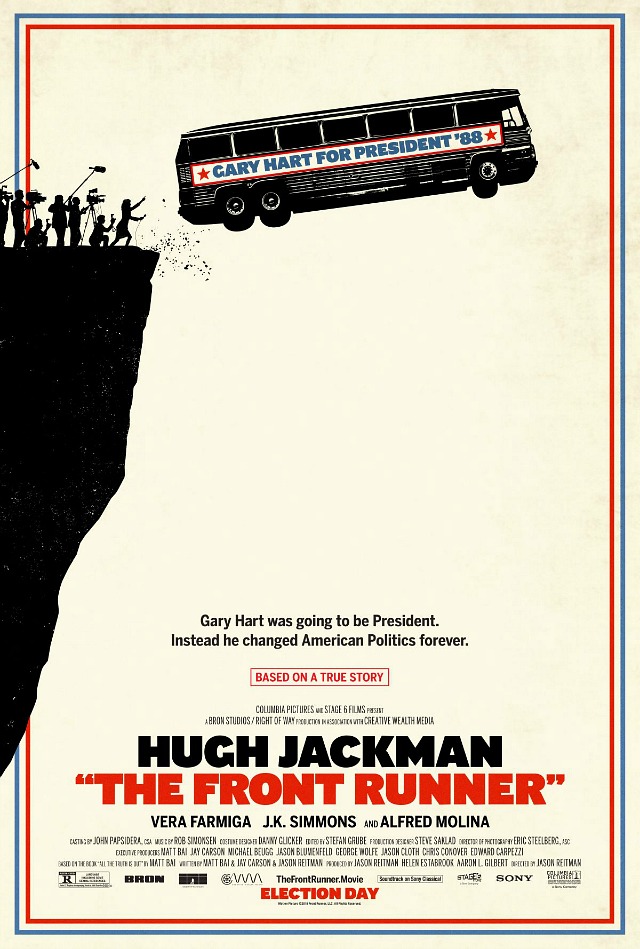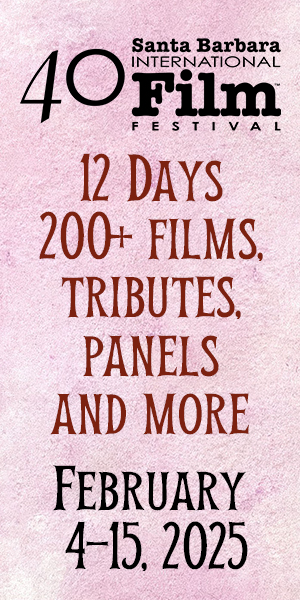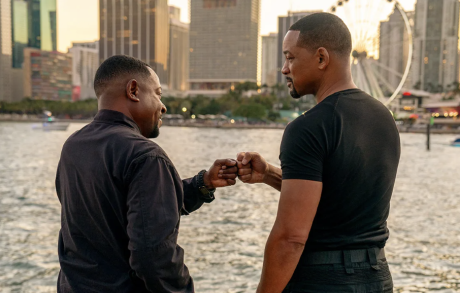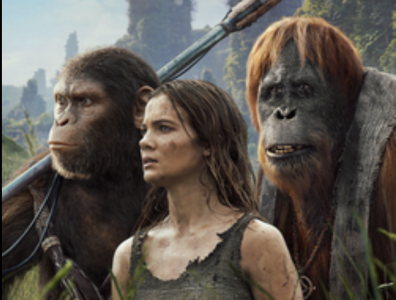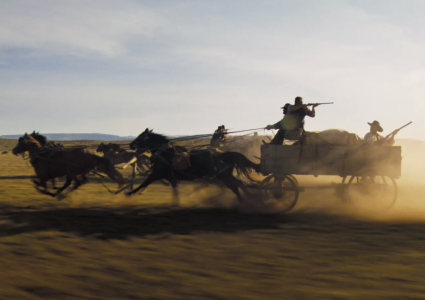Now that Telluride screenings are flying fast and furious I’m going through the usual homina-homina-homina. No time to write anything, squeezed from both ends, Macbook Pro batteries dying too soon, Jean-Luc Godard‘s Breathless. It’s 6 am as we speak. I crashed just after 1 am and awoke four hours later to get a jump on things, but I couldn’t make myself get out of bed until 5:30 am. I have to catch the gondola up to the Chuck Jones at 8 am to catch a 9 am screening of Alfonso Cuaron‘s Roma. I feel as if a bear is scratching at the door of my room and going “mwwaagghhh!…more reviews, more coverage…Instagram and Twitter posts aren’t enough, bitch…mwaaghhAWNNN!”
Last night I saw Damien Chazelle‘s First Man at 7pm, followed by Jason Reitman‘s The Front Runner at 10 pm. Both were (and probably still are) wowser thumbs-up immersions, but I have to say that Reitman’s film delivered a slightly bigger jolt in that I wasn’t sure how it would play (it’s a sharp, highly believable, exacting, well-acted, tip-top adult thing in all respects) whereas Chazelle’s film had been praised to the heavens in Venice. I therefore knew First Man would be dealing strong cards, but it was quite the surprise to realize by midnight that both films are heavy hitters.
The Front Runner is an exacting, brilliantly captured political tragedy, and easily Reitman’s best since Up In The Air. Yes, a Reitman comeback movie, and a good one at that. The 40-year-old director totally knocked it out of the park with Thank You For Smoking, Juno and Up In The Air but then seemed to lose that special touch over the last nine years. Now it’s returned. At least by my sights.
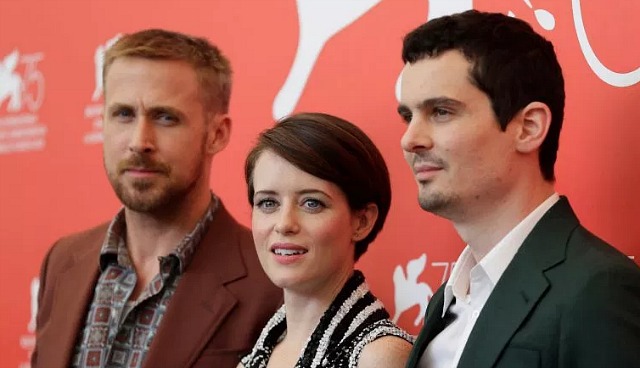
Gosling, Foy, Chazelle in Venice three days ago.
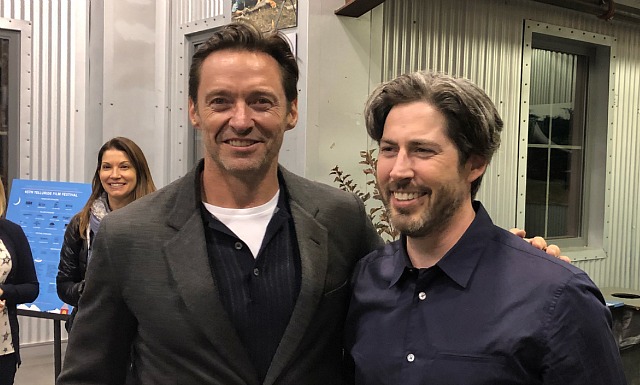
Hugh Jackman, Jason Reitman in Herzog theatre lobby last night around 9:40 pm.
The Front Runner reminded me at times of Michael Ritchie‘s The Candidate and sometimes surpassing that 1972 political drama in terms of believable campaign minutiae and a general drill-bit focus on the hundreds of little docudrama-like details that convince, divert and persuade. It also reminded me a bit of Mike Nichols‘ Primary Colors and James Vanderbilt‘s Truth, a first-rate politics-and-journalism film that was unjustly given the bum’s rush.
Hugh Jackman is totally first-rate as 1988 presidential contender Gary Hart — the ’80s liberal superstar in the Kennedy mold whom everyone angrily turned on at when his campaign totally fell apart over a brief, sloppily-arranged affair with a well-educated wannabe campaign worker Donna Rice. (She’s 60 now!)
But the screenplay, based on Matt Bai‘s “All the Truth Is Out: The Week Politics Went Tabloid” and co-written by Bai, Reitman and Jay Carson, portrays Hart in much more sympathetic terms — a guy who sadly screwed himself out of a shot at the White House over a mere dalliance but who had a real point when he argued that the media’s National Enquirer-like fixation on a sexual side issue that meant nothing and was nobody’s business to begin with was by far the greater mistake or misstep. Jackman makes you feel the rage about this.
The Hart-Rice affair was uncovered by Miami Herald reporters. Yesterday a friend from the Herald wrote to ask if the film identifies them chapter and verse, and I responded as follows: “The Miami Herald is completely and fully identified and the relationship between the Herald and Gary Hart is depicted as deeply antagonistic, especially on the Herald’s part. Kevin Pollack plays publisher Bob Martindale and Steve Zissis plays Tom Fiedler, one of the Herald reporters who chased the story. The Herald effort comes off as dogged but ultimately sleazy. This is not a positive portrait of the Herald or the press in general.
First Man is an intense, unconventional, psychologically penetrating take on the experience of Neil Armstrong (Ryan Gosling) and his wife, Janet Shearon (freckly-skinned Claire Foy, whom I last saw in Steven Soderberg‘s Unsane) from the early to late ’60s, culminating in the historic moon-landing mission of July 1969.
It’s no Ron Howard movie, that’s for sure — jarring, louder, lonelier, scarier, and well removed from that emotionally familiar, somewhat jingoistic universe of dramatic ups and downs that we all recall from Apollo 13.
I was seriously impressed with First Man because it’s really quite different — a kind of 16mm art film approach to an epic journey, an intimate, indie-styled, deeply personal movie writ large and loud with a rumbling, super-vibrating soundtrack. I agree with Owen Gleiberman‘s view that it’s the Saving Private Ryan of NASA space epics. The last 40 minutes or so (the 1967 fire tragedy to Neil and Janet’s post-mission meeting in an isolation area) are truly outstanding and suspenseful as fuck. It’s surely one of the measures of top-flight filmmaking that I was tense and worried about the success of a 50 year-old triumphant mission from 50 years ago.
And that rightwing “why have they ignored the planting of the American flag?” complaint is bullshit. The film shows two shots of the flag plus Neil’s kid raising the flag plus a shot of Neil saluting, or so it seemed to me.
Foy delivers the conventional emotional currents, calling Neil on his emotionally constipated bullshit but Gosling acts the hell out of Neil. Everything he does and says is very internal but you can read him in every scene. Don’t let anyone tell you that Foy owns this film — she does in an outwardly familiar sense but Gosling is doing something much braver and more intense in its own way.
Oh, the shaking, the throbbing, the rumbling, the overall loudness….wuuhhhrrrrnnannnggg…bang, bang, BANG, BUHNNG, WHAM, CLANG, ROAARRRRRRRMMMMmmmmm!

